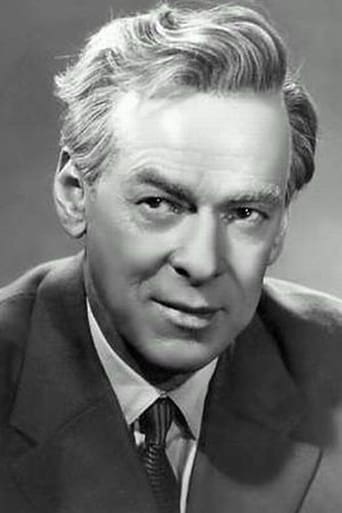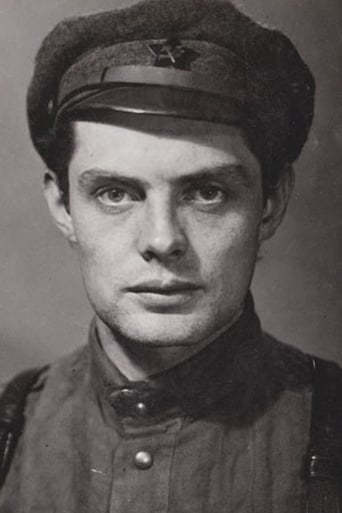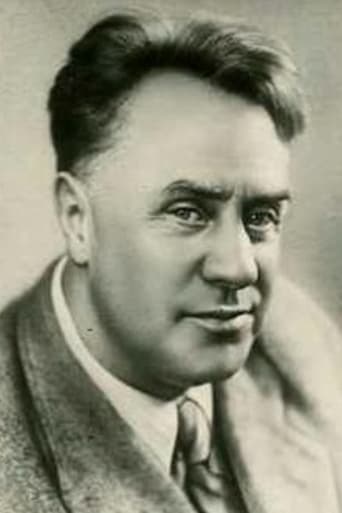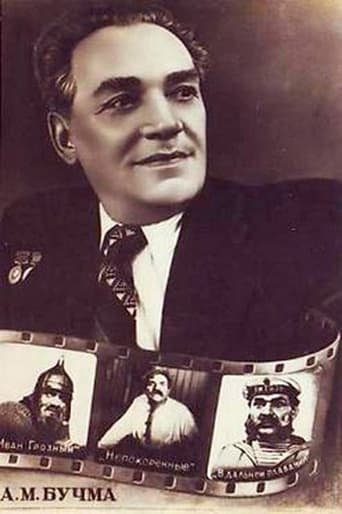Linkshoch
Wonderful Movie
Freaktana
A Major Disappointment
PiraBit
if their story seems completely bonkers, almost like a feverish work of fiction, you ain't heard nothing yet.
Bluebell Alcock
Ok... Let's be honest. It cannot be the best movie but is quite enjoyable. The movie has the potential to develop a great plot for future movies
treywillwest
Both of Eisenstein's Ivan films are extremely impressive, though it is part two that makes them a water-shed moment in film, and to a degree twentieth century, history.Aesthetically, perhaps the most impressive thing about the films is the art direction. That sounds like a strange thing to say about a film as intricately constructed as this one but I'll stick by it. The set pieces are not just impressive, but constitute brilliant and unique works of art in and of themselves. The nightmarishly icon-covered walls of the sets, the gorgeous but sinister props representing stupendous luxury and power, but also id-infused terror, could fill the halls of a major museum and wow in their own right, even if they were not part of a watershed-film.This is the only one of Eisenstein's films, that I know of, to be composed almost entirely of interior scenes. This gives a very claustrophobic quality, and makes the "leader of the people" seem utterly cut-off from the land and people he represents. The incredible chiaroscuro lighting also leads me to believe that Eisenstein had managed to watch the then only 7 or 8 year old Citizen Kane. Eisenstein's famed close-ups are juxtaposed with Wellsian deep focus and disorienting angles including those of ceilinged sets.And yes, that sense of detachment is what becomes, much more pointedly in part 2, the work's famed political commentary. Eisenstein had surely been prepared to die when Stalin saw the second film. It's depiction of the leader is unmistakable and, indeed, was not mistaken. Stalin repressed the second film and the planned third installment was never begun. Ivan is depicted as not so much monstrous, but trapped by power. By the second film he is more pathetic than terrifying. A man who is left desperately lonely because he has murdered all of his friends.
Boba_Fett1138
The movie "Ivan Groznyy I" from 1944 was already made in a terribly outdated style, even for its era. "Ivan Groznyy II: Boyarsky zagovor" is no different. Sergei M. Eisenstein's style of featuring long stares and extreme close-ups worked out extremely well and effective for his silent movies but in 'talkies' it only slows the movie down. Sure it's fine and artistically impressive looking all but it's not halve as effective as would be the case with a silent movie.Even though this movie got released 14 years after the previous movie "Ivan Groznyy I", it still got shot at the same time as the first movie. Reason why it got released so much later was because Stalin banned it because he wasn't too happy about the portrayal of Czar Ivan IV in this movie, who's more dark side is shown and besides shows a more crazy side of him, as he slowly slides into madness. Guess we should be lucky that this movie still exists today and that it didn't got completely destroyed during Stalin's reign.Because of the fact that the movie its story and main character are much darker, the movie becomes also more interesting to watch, when comparing it to the first movie. It's darker approach also makes its old fashioned style of film-making more tolerable. It suits its story better, even though its still far from ideal. I just can't imaging people still liked watching this in 1958, no matter how great and big Eisenstein was, who had died 10 years prior to the release of this movie.It's an interesting watch for those interested in history and for the fans of Eisenstein's work. It would had been interesting to see part III being completed but Stalin halted production and showed destroyed most of the already shot footage, since the movie once more didn't showed Ivan to his own liking and the movie was supposedly also a protest against Stalin own current regime, that showed some parallels to the tyrant methods of Ivan the terrible, as got portrayed in that movie.Already an outdated movie during the time of its production but still an artistically interesting movie to watch, that works out better than the first movie.8/10http://bobafett1138.blogspot.com/
OldAle1
Ivan returns to Moscow and begins the film in much the same way as we saw him in Part I, consolidating his power and attempting to break the control of much of the wealth of the country by the hereditary landowners, the boyars; the film is subtitled Boyarsky zagovar or "Boyar's Plot", so we know that this struggle will be central to the film. Ivan looks older and more tired, and there is even early on a glint of madness and fear in his eyes. Cherkassov is just as impressive as in the first film and conveys both age and growing paranoia subtly and broadly as the scenes demand.The intricate plot involves Ivan's growing suspicions of both his aunt Efrosina, who he (correctly) believes poisoned his wife and plots his own death, and his onetime friend Kolychev, who became the monk Philip in Part I. Philip has now agreed to become the Metropolitan of Moscow, essentially Ivan's link with the church -- here we have many opportunities to see the corruption of religion, which no doubt Stalin approved, though the rest of the film obviously appealed less to him as he had it shelved for the rest of his life -- and he is frustrated by what he sees as Ivan's misuse of power. Eventually the boyars get through to him, and in a truly magical and glorious kinetic celebration of dance, music and even color (red-tinted apparently 2-strip film from the Germans) Efrosina's and Philip's plots come together in the person of Efrosina's idiot son Vladimir....I won't spoil the ending, and will just finish my remarks by noting that the film also contains flashbacks to the Tsar's childhood, showing the justifications for his paranoia and hatred of the boyars as we see how his parents were both murdered at their behest; the young Ivan in these scenes (Erik Pyryev) is particularly notable; and the musical/dance sequences that occupy the last third of the film allow us to see Eisenstein at his Hollywood-gaudiest, a potential director of Gene Kelly or Fred Astaire, a mounter of neo-Busby Berkley spectaculars. What films those might have been! It's impossible for me to pick a favorite between the two films; Part I is in some ways closer to an action spectacle, an old 30s serial; Part II is wilder and woollier, more expressionistic and less real but just as involving...for me the progression of Ivan's character is quite believable, the performance of Cherkassov perfectly suited to a man who is aware that he is, in the minds of his people and the limited political conscience of a medieval world, more than a man though far less than a God or an angel.The Criterion DVD is, like the disc for Part I, absolutely splendid; it's hard to imagine the film looking better than this, or indeed any film from the era looking better.
nycritic
Sergei Eisenstein had planned to make a trilogy about the life of the Russian czar Ivan Groznyy. This, the second part (and the last to be seen in its entirety since the third part exists only as a four-minute fragment), can be seen separately, since it goes into a flashback from when Ivan was a young boy, thrown into power by conspiracies not of his own making, a witness of the poisoning of his own mother and his wife, and the seeds of his hatred towards the boyars. A lonely existence, Eisenstein brings to life a movie that feels claustrophobic and dark all the same, very suffocating since it transpires almost entirely in interiors, giving way to an even stronger sense of menace. Even as a short film, IVAN THE TERRIBLE: PART II is a slow, escalating march towards the uncovering of an assassination plot meant to rid him from the throne in lieu of his cousin Vladimir Staritsky, a thing that his mother Eufrosinia wants with a vengeance, since this would mean power to the boyars. Visually stunning in its black and white sequences, the last half hour takes place almost entirely in color, and the experimental choice then used to colorize the film makes it all the a harrowing masterpiece in reds, blues, and greens.






